Are you ready to take on the challenge of growing Vinca from seed? Along with its beautiful showy blooms, this hardy plant is a low-maintenance addition to any garden. It can even tolerate poor soil conditions and unfavorable climates. Growing Vinca from seed isn’t difficult but it does take a bit of patience and attention. We’ll walk you through every step along the way so that you have everything you need to succeed in getting your seeds germinated and producing happy vincas!
Facts About Vinca Flowers
Vinca, scientifically known as Catharanthus roseus, is a perennial plant that belongs to the dogbane family, Apocynaceae. This beautiful evergreen plant boasts elegance and grace, adding a touch of natural beauty to any landscape. Native to Southeast Asia, Vinca flowers are popular for their many colors and warm-season blooms that last from summer to fall. The small but showy flowers range from white to shades of pink, red, lavender, and purple. The leaves have a glossy texture and are usually green or variegated.
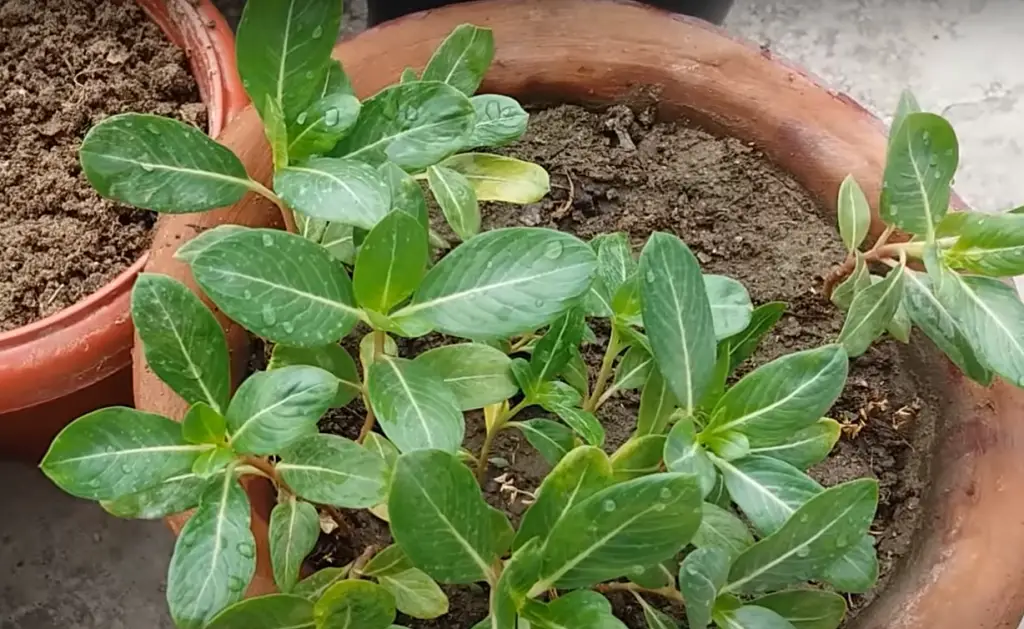
In addition to its use as an ornamental plant in gardens, Vinca has long been used medicinally for its healing properties. It is most often used in traditional Chinese medicine for treating fevers and digestive issues.
When Should You Plant Vinca Seeds
Vinca seeds should be planted in the late winter or early spring, when there is still a chance of frost.
Plant the seeds about 1/8 inch deep and cover lightly with soil. Water the area gently after planting and keep it moist until the seedlings emerge. After emergence, reduce watering to avoid drowning the young plants. The seedlings will take about three weeks to reach transplantable size. When they are large enough, thin them out so that each plant has room to spread out and mature properly. [1]Materials Needed to Start Vinca From Seed
To begin the process of growing vinca from seed, it is necessary to gather the following materials:
- Vinca seeds – Vinca seeds can be purchased from your local garden store or online.
- Planting trays or pots – Choose either planting trays or individual pots with drainage holes in the bottom for optimal growth.
- Planting medium – Use a light and airy potting soil mix that drains well and won’t become overly compacted over time. Peat moss is also an option as it helps retain moisture while keeping the soil aerated.
- Water – Make sure to keep the soil moist but not soggy, as too much water can lead to root rot.
- Fertilizer – A balanced, all-purpose fertilizer can be applied to the soil monthly to help your vinca plants grow.
How to Sow Vinca Seeds
Vinca, or Periwinkle, is a popular flowering annual that adds a splash of color to any garden. Cultivating vinca from seed is a truly gratifying endeavor for any passionate home gardener.Here’s how to get started:
- Start your seeds indoors 6-8 weeks before you plan on transplanting them outdoors. Fill a large tray or pot with moistened potting soil and sprinkle the Vinca seeds across the top of the soil. Cover lightly with additional potting soil and water gently until evenly damp.
- Place the tray in an area with bright indirect light and cover with plastic wrap or a dome to keep moisture levels high while the seeds are germinating. Remove plastic once sprouts have appeared.
- When your seedlings have two or three sets of leaves, they are ready to be transplanted outdoors. Choose a sunny spot with well-drained soil and carefully dig small holes for the Vinca plants. Place them in the holes and cover lightly with extra soil. Water thoroughly after transplanting.
- Throughout their growing season, keep your Vinca plants watered regularly and fertilize monthly with a balanced fertilizer for best results. Deadhead spent flowers to encourage new blooms and remove any diseased foliage as soon as it appears for healthy growth throughout the year.
Following these steps will ensure that you have beautiful Vinca blooms all summer long! [2]
Is It Easy To Grow Vinca From Seed?
It is quite easy to grow vinca from seed.
Before starting, choose a site with full sun or partial shade and well-drained soil that is slightly acidic.To germinate seeds quickly and efficiently, sow them in moistened sterile planting mix at a depth of 1/4 inch (6 mm). Place a single seed in each cell of a small tray filled with potting soil, cover lightly with soil and water gently until evenly moist but not soggy. Place the tray indoors or outdoors where temperatures are between 65°F and 75°F (18°C – 24°C). Keep the soil moist, but not soggy. When the seedlings appear, keep them in a sunny spot or under fluorescent lights until they are ready to be transplanted into the garden after all danger of frost has passed.
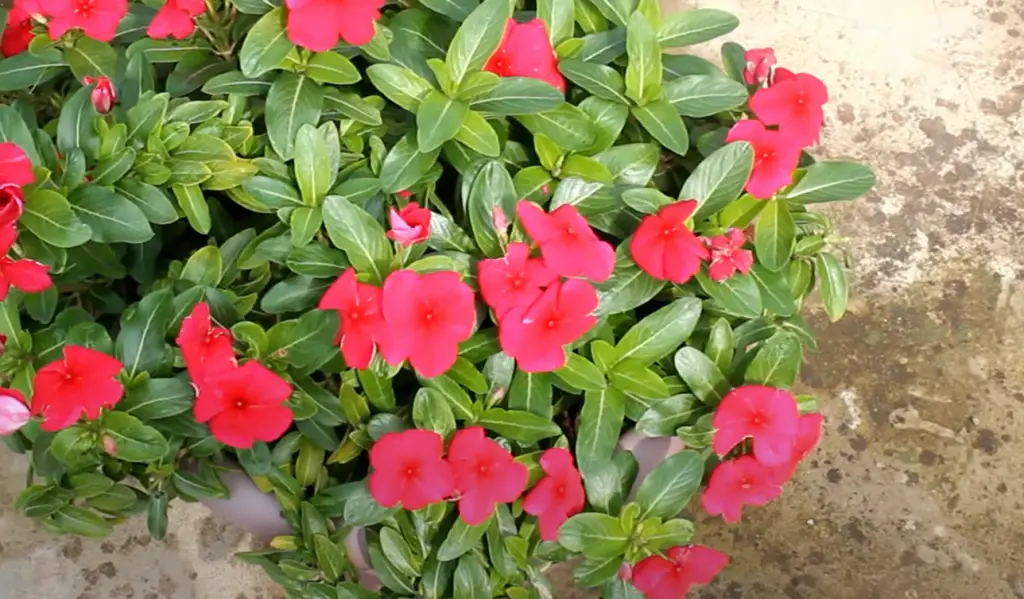
When planting vinca outdoors, space plants 12 inches apart in rows spread 18 inches apart for larger varieties. Water thoroughly and mulch with organic material to conserve moisture and suppress weeds. Vincas will need regular watering during dry spells, especially during their first season to establish strong root systems.
Once established, vinca is surprisingly drought-tolerant and should only need occasional deep watering unless there is an extended period of drought. Feed your vinca plants with a balanced liquid fertilizer every two weeks during the growing season. Prune back any leggy stems in early summer and remove spent flowers to encourage continued blooming. With minimal care, you can enjoy a long-lasting flowering display in both borders and containers. [3]
How Long Does It Take For Vinca Seeds To Germinate?
Vinca seeds take between 7 and 21 days to germinate. The exact time frame may vary depending on the temperature, light, and soil moisture of your environment. Vinca seeds should be planted in a lightly shaded area with well-draining soil that is kept consistently moist. Germination can be improved by soaking the seed overnight before planting. To ensure success, it’s best to plant multiple seeds in case some don’t sprout. Once the seedlings appear, thin them out so that only the strongest plants remain. With proper care, you can expect to see blooms from your vinca plants within 8–12 weeks after germination!
Does Vinca Need Darkness To Germinate?
Yes, Vinca requires darkness to germinate. Seeds should be planted shallowly and covered with a thin layer of soil or sand. The seedlings will emerge in 10-21 days under the right conditions. To get a good head start, it is important to keep the seeds moist until they have sprouted. Once they have begun growing, you can reduce watering slightly and move them into more light if desired. Full sun is not necessary for Vinca but will help promote vigorous growth and abundant flowering. In areas where temperatures stay quite warm through winter, Vinca may die back after blooming but will often come back from its roots in springtime with proper care and maintenance.
Where Does Vinca Grow Best?
Vinca, also known as Periwinkle, is a low-growing, evergreen flowering plant native to Europe and western Asia. It can thrive in many climates and soil types with the right care. Vinca grows best in areas of full sun but can tolerate some light shade. The ideal temperature range for vinca is between 60-75 degrees Fahrenheit (15-23°C).
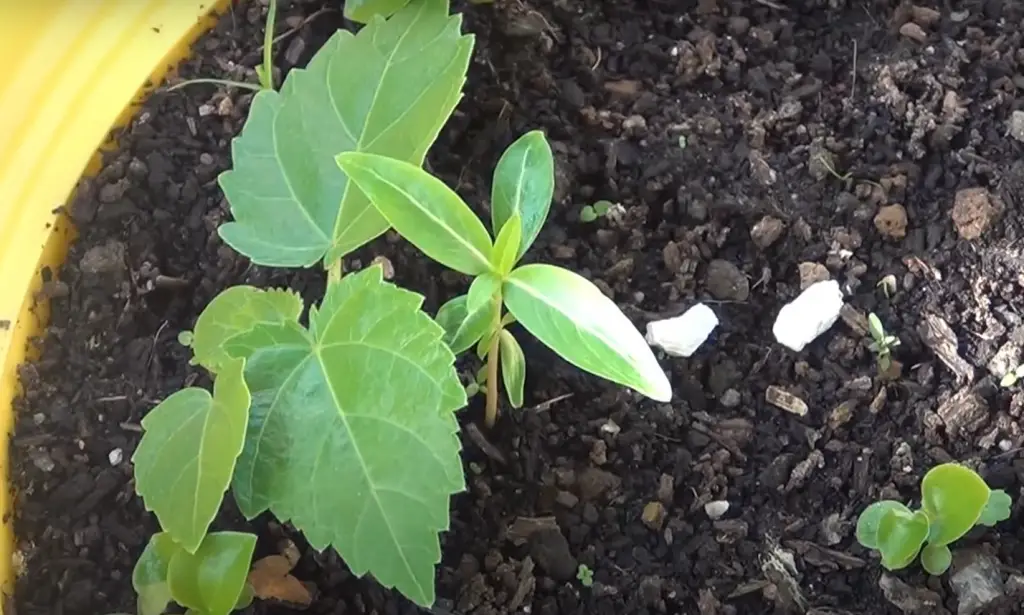
Regular watering is required to keep the soil moist but not wet at all times; established plants can withstand short periods of drought. Vinca prefers a well-drained soil that contains organic matter such as composted leaves or manure to ensure healthy growth. An application of fertilizer twice a year will help promote vigorous blooms throughout the growing season. Proper care and maintenance will ensure that vinca grows healthy and produces a beautiful floral display year after year. With the right amount of care, you can have a stunning garden full of vibrant blooms! [4]
Common Problems When Growing Vinca From Seed
When growing Vinca from seed, there are a few common problems that you may encounter. One of the most common issues is damping-off, which occurs when fungal or bacterial disease develops in wet soil. To prevent this from happening, be sure to provide adequate drainage for your soil and keep it dry between waterings. You should also avoid over-watering and use a well-draining potting mix.
Another common problem with vinca grown from seed is poor germination rate. This can be caused by too much moisture or not enough light. Make sure to provide plenty of sunlight and sow your seeds shallowly in moist but not soggy soil so they don’t drown during germination. Finally, be patient and give the seeds plenty of time to germinate as some can take up to several weeks.
Growing Vinca from seed is not difficult, but it does require patience and attention to detail in order to ensure successful results. With proper preparation and care, you should have a thriving crop of vinca plants in no time! [5]
Can You Grow Vinca as a Houseplant?
Yes, you can grow vinca as a houseplant. However, it’s important to note that the plant prefers bright light and needs to be kept moist during its growing season. When grown indoors, you should place it in an area that receives at least six hours of direct sunlight or use artificial lights for supplemental lighting. In addition, make sure the soil is well-draining and water frequently as needed to keep the soil lightly moist but never soggy. You’ll also need to fertilize your vinca every two weeks with a balanced fertilizer such as 10-10-10 (NPK). Finally, prune off dead or diseased leaves regularly to ensure healthy growth.
With proper care and attention, your vinca can be a beautiful addition to your home. Enjoy the colorful and vibrant blooms this plant provides all year round!
Does Vinca Go Dormant in Winter?
Yes, vinca goes dormant in the winter. When temperatures drop below 55 degrees Fahrenheit, it will stop growing and go into dormancy. During this time, the plant will enter a state of reduced activity to conserve energy until conditions improve. The foliage may turn yellow or brown before dropping off the stem entirely. To protect against extreme cold temperatures, mulch can be applied around the base of the plants to insulate them from freezing weather. In warmer climates, vinca may remain evergreen throughout the year or remain semi-evergreen during mild winters. Make sure to water adequately during drought periods and prune away dead stems to promote healthy growth when spring arrives.
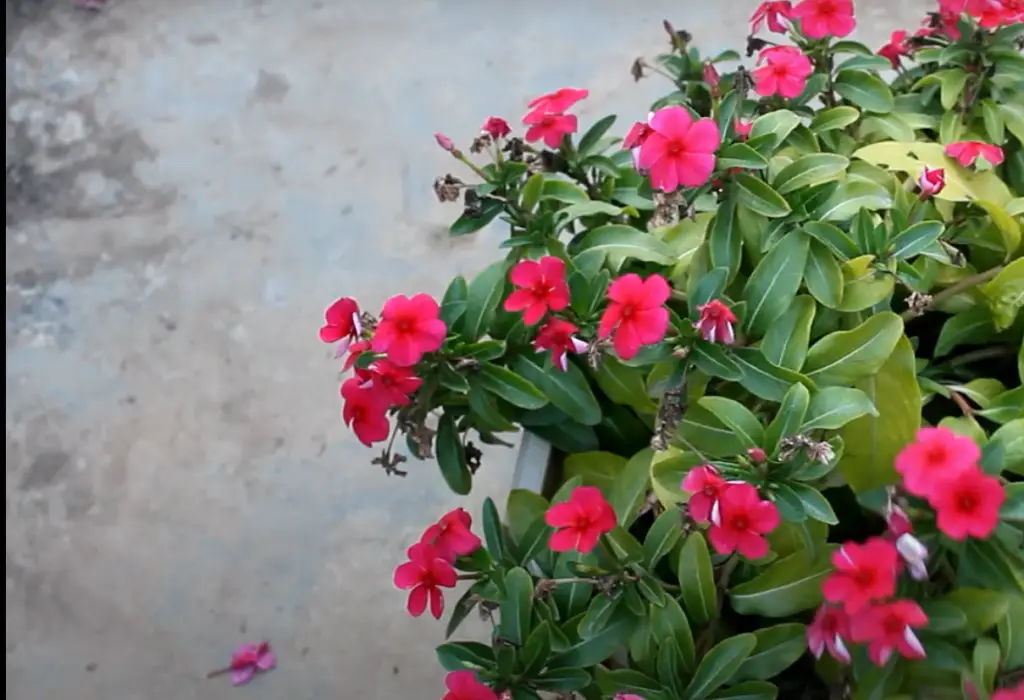
With proper care, your vinca should come back strong each spring and bloom with beautiful purple flowers. In late winter or early spring, start your vinca seeds indoors in pots filled with moist potting soil.
When temperatures warm up enough outside, the young plants can be transplanted into your garden bed, but make sure they are spaced far enough apart to give each plant room to grow. This is especially important if you’re planting a large number of vinca together for a carpet of color in your flower bed! After transplanting, provide regular water and apply fertilizer when necessary during its growing season. [6]FAQ
Is vinca easy to grow from seeds?
Yes, vinca is relatively easy to grow from seeds. All you need is a well-draining potting soil mix, and some patience and you can successfully grow vinca from seed.
How long does it take for vinca to germinate?
Vinca seeds typically take between 14 and 28 days to germinate when kept at a temperature of around 70°F (21°C). The soil should be kept moist but not wet, and it is important to make sure that the seeds are not covered with more than 1/8 inch of soil. If you keep the planted seeds in bright indirect light, they should begin emerging within 2 – 3 weeks. After the seedlings have emerged, thin them out by snipping off or transplanting any weak-looking plants so that you only keep the strongest ones. When they reach 4 inches in height, transplant them outdoors if desired. To ensure successful growth, provide plenty of moisture and full sun to your vinca plants.
How do you grow vinca seeds indoors?
You can start vinca seeds indoors 6 to 8 weeks before the last expected frost. Fill a pot or seed tray with a light, well-draining soil and moisten it until it is damp but not wet. Plant the seeds 1/8 inch deep and cover them lightly with soil. Place the container in bright indirect light and mist it regularly to keep the soil moist.
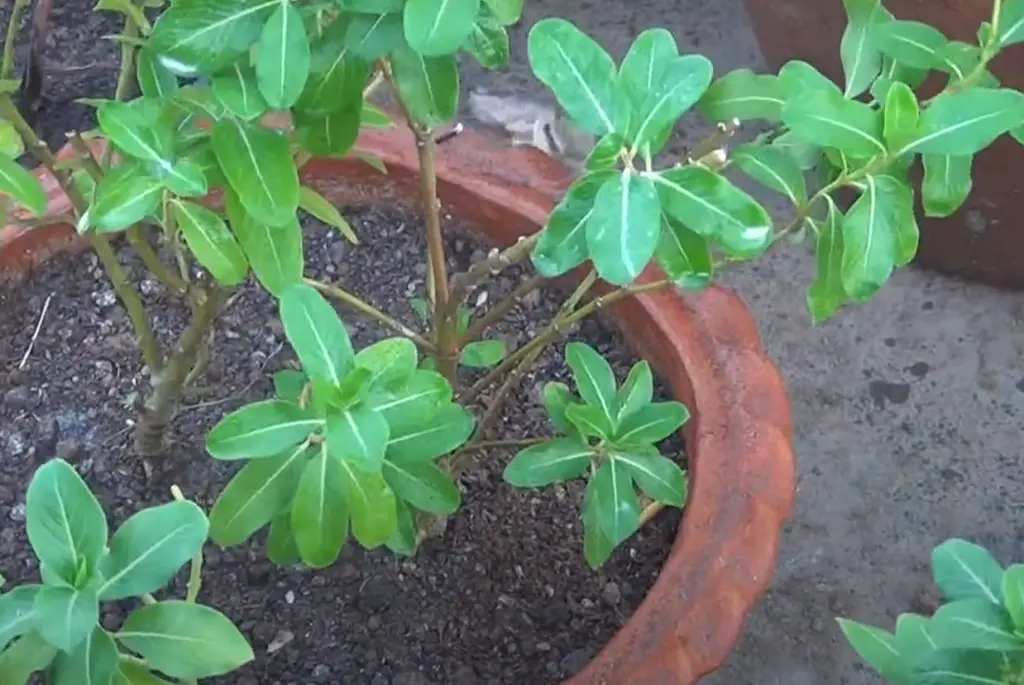
When temperatures are warm enough, transfer your plants outdoors after hardening off for one week. If you decide to grow your vinca plants indoors, make sure they get plenty of sunlight and water. You may also want to fertilize them every 4 – 6 weeks during their growing season (spring through early fall). With proper care, your indoor vinca plants should thrive and flower during the summer months.
Are vincas self seeding?
Vincas are not typically self-seeding plants. While one vinca flower may produce many seeds, these seeds will not readily germinate without proper conditions and care. In order to ensure successful seed germination, the soil must be kept consistently moist until the seedlings emerge. Once the seedlings have emerged, they should be transplanted to their permanent location in full sun or partial shade. The young plants should then be watered regularly and fertilized with a balanced fertilizer for optimal growth. With proper care, vincas can make a beautiful addition to any garden!
Do vincas like sun or shade?
Vincas can be grown in both full sun and partial shade. For optimal growth, choose a location that has well-drained soil and at least 6 hours of direct sunlight each day. If you are growing vinca in partial shade, make sure to provide it with additional moisture to ensure successful growth. Vincas also prefer somewhat acidic soils, so adding compost or mulch may be beneficial.
What kind of fertilizer should I use for my vinca plants?
A balanced fertilizer is best for vinca plants. Look for a fertilizer that contains nitrogen, phosphorus, and potassium such as 10-10-10 or 8-8-8. Avoid fertilizers with high amounts of nitrogen as this can cause the plants to become leggy and weak. Apply the fertilizer every 2-3 weeks during active growth for best results. Additionally, be sure to water your vinca plants regularly as they do not tolerate drought conditions well.
When should I prune my vinca plants?
Vincas can be pruned in late winter or early spring before new growth begins. Pruning will promote bushier, more compact growth and also remove any dead or diseased foliage that may have occurred over the winter months. Be sure to use sharp pruners and make clean cuts just above a leaf node on the stem of the plant. After pruning, apply a balanced fertilizer to help promote healthy new growth.
When should you plant vinca seeds?
Vinca seeds should be planted in late winter or early spring when the soil temperature reaches above 60°F (15°C). Before planting, mix some compost or other organic material into the soil to improve drainage and fertility. If you are sowing directly outdoors, rake the area smooth and remove any weeds or debris. Make sure that your chosen site has full sun exposure. Next, sprinkle a thin layer of vinca seeds over the prepared soil bed. Gently press them down with your hands to ensure good contact between seed and soil. Depending on how big you want them to grow, space the seeds 4-6 inches apart.
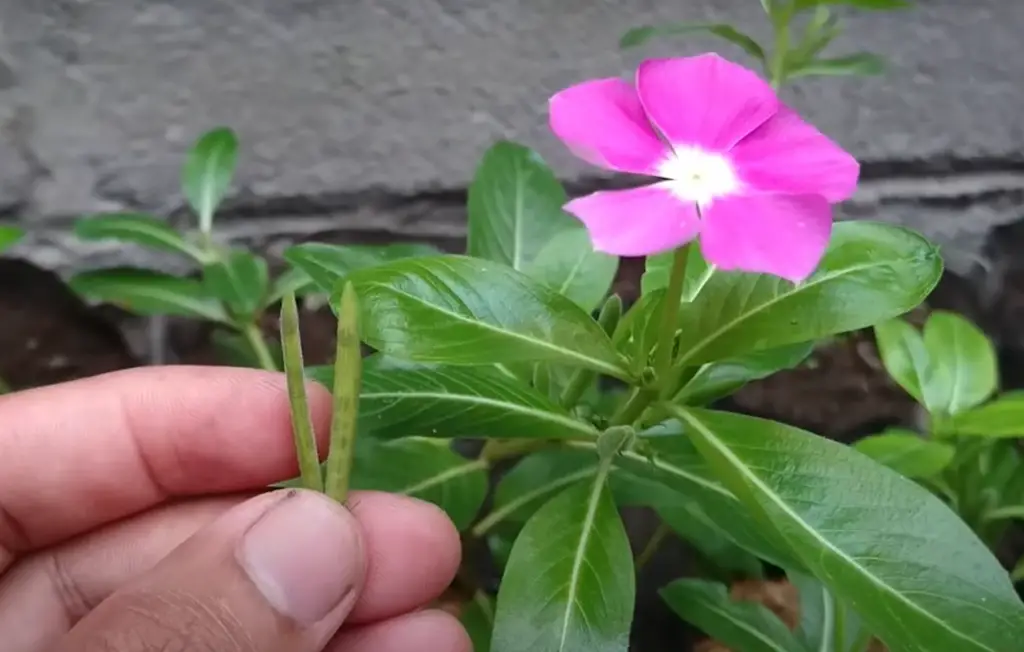
Water well, making sure not to disturb the seeds too much in the process. Keep the soil consistently moist until germination, which usually takes around 10-14 days. When the seedlings are about 2 inches tall, thin them to their desired spacing. For larger plants, thin to 12 inches apart; for smaller ones, 6-9 inches apart should do it. Finally, mulch the area with an organic material such as wood chips or straw to help keep moisture in and weeds out. Now that you’ve planted your vinca seeds, they need proper care to ensure a healthy growth season! Make sure to water regularly and provide supplemental fertilization every few weeks during the growing season.
Can vinca be rooted in water?
Yes, it is possible to root cuttings of vinca in water. To do this, take a cutting from an existing plant about 6 inches long and remove the lower leaves. Place the cutting in a glass or jar filled with water and place it in bright but indirect sunlight. Change the water every few days to keep it fresh and within a few weeks you should start seeing roots growing from the cutting! Once they’ve reached several inches long, transfer them to moist soil to finish their growth cycle. With proper care, your new vinca plants will thrive!
How do you winterize vinca?
Vinca plants are very resilient and can survive cold temperatures. To winterize vinca, trim back the plant in fall to remove any dead or damaged growth. Make sure you leave enough foliage on the plant so it has some protection against frost. Covering the area with mulch is also recommended as this helps insulate the soil and slow down water loss during colder months. Additionally, watering your vinca sparingly throughout the winter will help them stay hydrated and reduce freezing risks. Finally, if necessary, move container-grown vinca indoors to protect them from extreme cold weather conditions when temperatures drop below 15°F (-9°C). With proper winterization, your vinca will be ready to thrive again in the spring.
Useful Video: How to Grow Vinca or Periwinkle from Seeds (With update videos)
Conclusion
Growing Vinca from seed is a straightforward process that requires some patience and attention. However, with consistent care and nurturing, you can successfully produce beautiful blooming plants that will bring bright shades of color to your yard or garden. Be sure to use fresh seeds for best results, prepare the soil carefully, keep the seedlings in a space with plenty of light and ventilation, and water regularly. With these tips in mind, you’ll be on your way to growing vibrant Vinca flowers!
Good luck, and happy gardening!
References:
- https://www.theseedcollection.com.au/growguide/vinca-seeds
- https://www.gardenerbasics.com/blog/how-to-grow-vinca-from-seed
- https://www.gardeningknowhow.com/ornamental/flowers/annual-vinca/growing-annual-vinca-seeds.htm
- https://www.ehow.com/how_7596932_grow-vinca-seeds.html
- https://extension.umn.edu/flowers/vinca
- https://www.bhg.com/gardening/plant-dictionary/annual/annual-vinca/










Leave a Reply
View Comments